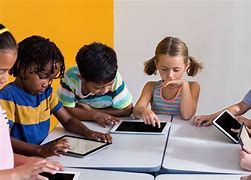In the swiftly changing realm of education, the integration of online resources into the traditional school curriculum has become of utmost importance. Incorporating digital tools into education not only enhances the learning experience but also equips students with indispensable skills crucial for navigating the challenges of the 21st century, fostering a dynamic and future-ready educational journey. It is essential for educators to investigate efficient methods to smoothly integrate online resources into the school curriculum, reshaping education and readying students for forthcoming challenges.
1. Interactive Learning Modules for Enhanced Understanding:
Traditional textbooks have their place, but the interactive nature of online learning modules, such as lms system, takes education to a whole new level. These modules can include multimedia elements such as videos, simulations, and quizzes, providing students with a dynamic and engaging learning experience. Imagine a biology lesson where students can virtually dissect a frog or a history lesson where they explore ancient civilizations through interactive timelines. Educators can cater to diverse learning styles and make complex concepts more accessible by integrating such resources.
2. Virtual Field Trips: Bringing the World into the Classroom
Online resources can open doors to the world beyond the classroom walls. Virtual field trips allow students to explore historical landmarks, natural wonders, and cultural institutions without leaving their seats. Virtual field trips offer an immersive experience that traditional field trips cannot always provide, whether it is visiting the Louvre Museum in Paris or exploring the Great Barrier Reef. This not only broadens students’ perspectives but also makes learning more memorable and enjoyable.
3. Collaborative Platforms for Real-time Interaction:
The integration of collaborative platforms fosters real-time interaction and teamwork among students. Know that applications such as Google Workspace for Education or Microsoft Teams empower students to work together on projects, exchange ideas, and offer feedback, irrespective of their geographical location. This not only make them ready for the teamwork prevalent in the professional sphere but also cultivates essential communication skills vital for success in various fields. This way, instructors can foster a more inclusive learning atmosphere by motivating students to engage in collaborative efforts and glean knowledge from one another.
4. Personalized Learning Paths for Individual Progress:
Each student possesses a distinctive learning speed and method. The incorporation of these digital resources facilitates the development of customized learning paths that cater to individual requirements. These learning platforms evaluate a student’s strengths and weaknesses, adapting the curriculum to concentrate on areas requiring enhancement. This individualized strategy ensures that every student receives the necessary support and enables advanced learners to progress more rapidly. Additionally, the implementation of a lesson plan management system can simplify educational content, enabling teachers to efficiently create, monitor, and modify lessons to align with the dynamic needs of students in the digital era. This approach empowers educators to optimize the efficiency of their teaching by addressing the unique learning styles of each student.
5. Gamification to Boost Engagement and Motivation:
Leveraging gamification proves to be a potent method for amplifying student involvement and drive. Instructors can craft an interactive and pleasurable learning atmosphere through the infusion of game-inspired features into the educational framework. Tailored educational games can cover a diverse array of subjects, spanning from mathematics and science to language arts and history. The dual impact of making the learning process enjoyable and furnishing immediate feedback serves to motivate students, promoting their perseverance in academic endeavors. Gamification taps into the natural competitive instinct, turning education into an exciting journey of exploration and achievement.
In conclusion, the integration of online resources in school curriculum opens up a world of possibilities for educators and students. Know that these approaches enhance the educational experience and equip students with the skills necessary for the future, from interactive learning modules to virtual field trips, collaborative platforms, personalized learning paths, and gamification. Embracing digital tools is not just an option but a necessity for preparing the next generation for success as we navigate the ever-changing landscape of education.

